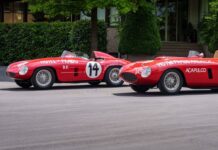The new Aston Martin Vantage makes a dramatic entrance. Trumpets, fanfares, fireworks.
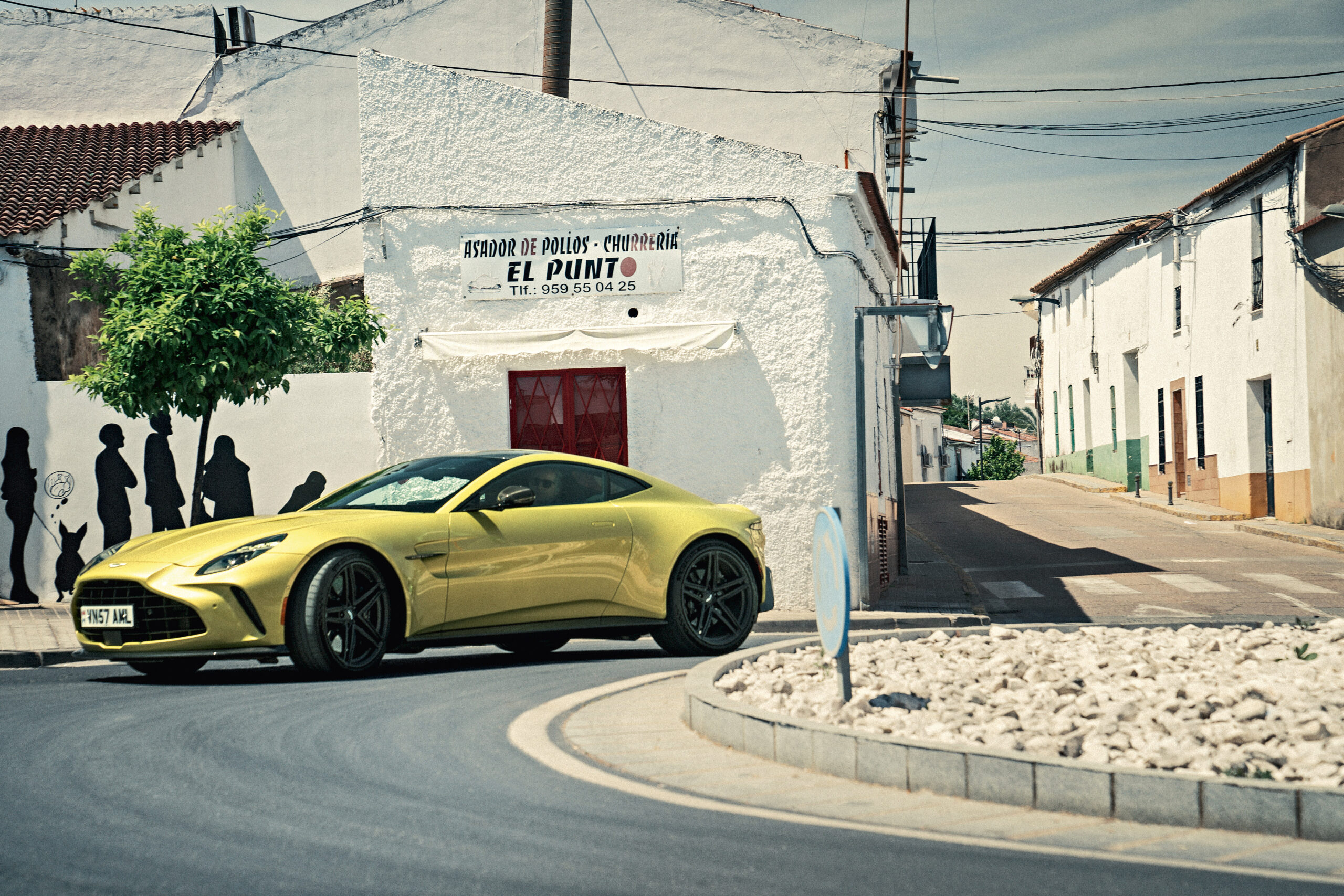
It’s gotten late. In fact, it’s getting later all the time. And I’m not talking about the time of day, but about the perceived present. We live in a kind of late age. Everywhere we turn, it’s always five to twelve or already ten past. The climate, politics, the economy and, above all, society – everything is broken. It’s hopeless. Not to mention, of course, that everything used to be better in the past. The Viennese historian Valentin Groebner even wrote a book about it: Gefühlskino: Die gute alte Zeit aus sicherer Entfernung [Emotional Cinema: The Good Old Days from a Safe Distance]. To summarize: the end is nigh. Though that’s been the case for the past 2,500 years. How you deal with it, however, is up to you. Just remember: glorifying the past won’t help. The past was neither universally better nor universally worse. The past is the past. Over and done.
And now comes the Aston Martin Vantage, the revised version, meaning: better than its predecessor, or, in terms of epochal philosophy, better than the past. The bar is set high. A glance at the spec sheet . . . and our first thought is: typo! Has to be. An extra 153 hp of power, peaking at 656 hp with 800 Nm of torque? That’s not a significant improvement. That’s not the revised version of an impressive front-mid-engined sports car. That’s a denial of the past. It’s almost as if the new Aston Martin Vantage were shouting at you, “I can’t remember the past. Not interested in it either! I’ve wiped it from my memory. I live in the here and now.”

This Vantage is a super sports car of the latest technical design. But based on a strictly traditional concept. A combustion engine, a V8 at that, installed longitudinally in front of the driver, with fresh air forced in highly compressed by the turbos. Gearbox at the rear, rear-wheel drive. You don’t see that too often these days. The golden 50/50 weight distribution. And those contours and the front end! (Yes, it really does look like a face, albeit not a particularly friendly one.) With its tremendous performance, an Aston Martin Vantage has always been a sports car with an extraordinary physiognomy.
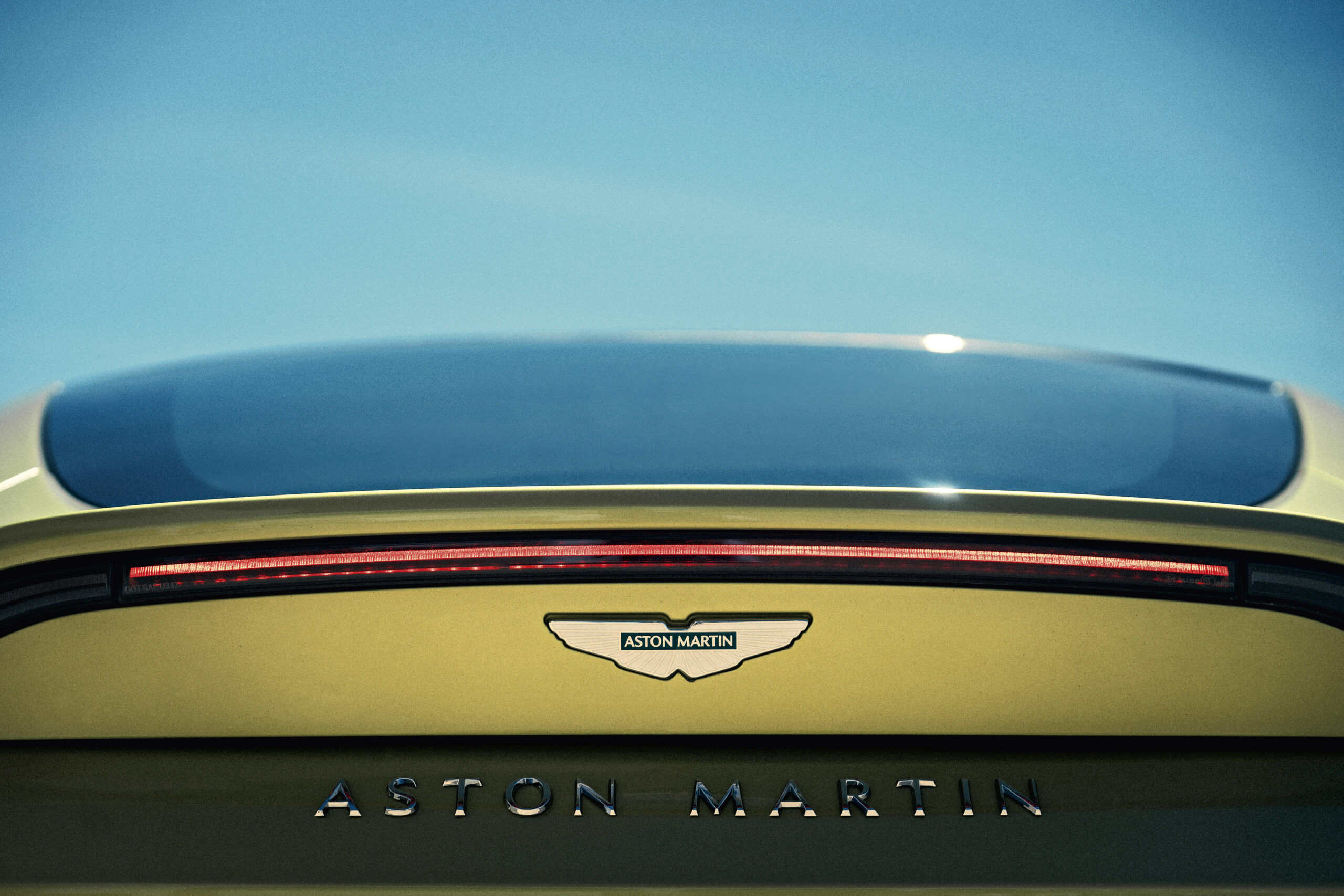
Enter Marek Reichman, Executive Vice President and Chief Creative Officer. He points out that Aston Martin has a huge tradition. The question is just how deep to dig. Perhaps as far back as the DB2, to 1950: New York Auto Show, the Le Mans victory in June, Briggs Cunningham’s entry at Sebring in a beefed-up version with 125 hp. Possibly the very first Vantage. Mention must also be made of the Vantage V12 S with seven-speed manual gearbox, this time from 2015. Certainly not the fastest on the track, but nobody ever wanted to get out again because the grin on their faces was wider than the car’s door. Identity? Quite inconsistent over Aston Martin’s 111 years. And if you believe some of our colleagues from the motoring press, there were one or two things to forget anyway. Like the “Russian doll era” when even dealers had a hard time distinguishing the various models from one another.

Reichman understands that people look at the appearance and expression of a car like a human face. This makes design something we read. It goes without saying, therefore, that appearance and character – in the case of the sports car this equals performance – must go together. A point that has not always been implemented consistently at Aston Martin. But that too is a thing of the past. The Vantage owes its increased performance primarily to advances in its technology: larger turbos, more boost pressure, modified cam profiles, optimized compression ratios and improved cooling with an additional low-temperature radiator and oil cooler. So let’s hit the road. Now! Deserted mountain passes in the hinterland of Seville. We were last here with the Ferrari 296 GTB. Very fond memories. Exclusively.
Driving modes? Sport, for starters – the default setting. That leaves us with Sport Plus and Track for even more speed. And besides, the philosophy of approaching things with an open mind still works surprisingly well. The Vantage leaves no questions unanswered, even before we get started. It has to go faster, always faster. Our simple plan: to mask our increasing excitement with an increasingly senseless acceleration and braking, hoping to shake something free – the truth, the tension, or at least some rubber wear on the rear wheels. What are we waiting for? It’s showtime!
Fourth corner. The Vantage never loses its rhythm. Whinnying rear tires! All in good fun. Not serious and not meant maliciously at all. Wondering at this point what the higher grip of the specially developed Michelin Pilot Sport S 5 tires can be attributed to is a sign of brazen unsportsmanlike behavior, or at least of a dubious character. A little more discipline from now on. Let’s cover some ground.

Maybe two or three minutes at most have passed so far. Time for a quick breather. The sound of that V8! It’s a cowboy-concert-cognac voice, a bit smoky, a bit dirty, but always likeable . . . Three or four fast bends. Very fluid, everything goes smoothly. Wonderful. The Vantage responds directly and immediately in the turns. It feels as if the curves are on your side. As a partner in crime, so to speak. The car really loves cornering. It wants to be pushed to the limit, and beyond! Struts, underbody panels and larger cross braces enhance torsional rigidity and increase lateral stiffness. Aston Martin claims a five hundred percent increase in the bandwidth of force distribution.
What else? Both driver and Vantage are immediately on the ball: even more alert, even more excited, even more concentrated. A dialog develops. Whereby, of course, the nuances of the conversation are all the more important. The spirit of speed resides in what is left unsaid, not in the straight line, as the racing philosophers preach. And like no other Aston before it, this Vantage resides close to the limits of common-sense thinking. As of this year, it is the official safety car in Formula 1. The Aston Martin Vantage even has an entry as safety car in the Internet Movie Cars Database for the Netflix documentary Formula 1: Drive to Survive. With two out of five stars, it is classified as a “minor action vehicle”. This classification is a bit misleading, however, as all the other cars listed are current Formula 1 race cars.
The question is: Where is it all headed? And what about the competition? Hmm . . . AMG GT? Does have the same concept. Jaguar F-Type? Sure, but what else? Does the Dodge Viper even still exist? No? A thing of the past? Too bad. So . . . It’s slowly becoming too much to bear. Too much heat, too much power, too much emotion. When driving becomes madness, it’s better to stop. Pull over and cool down.
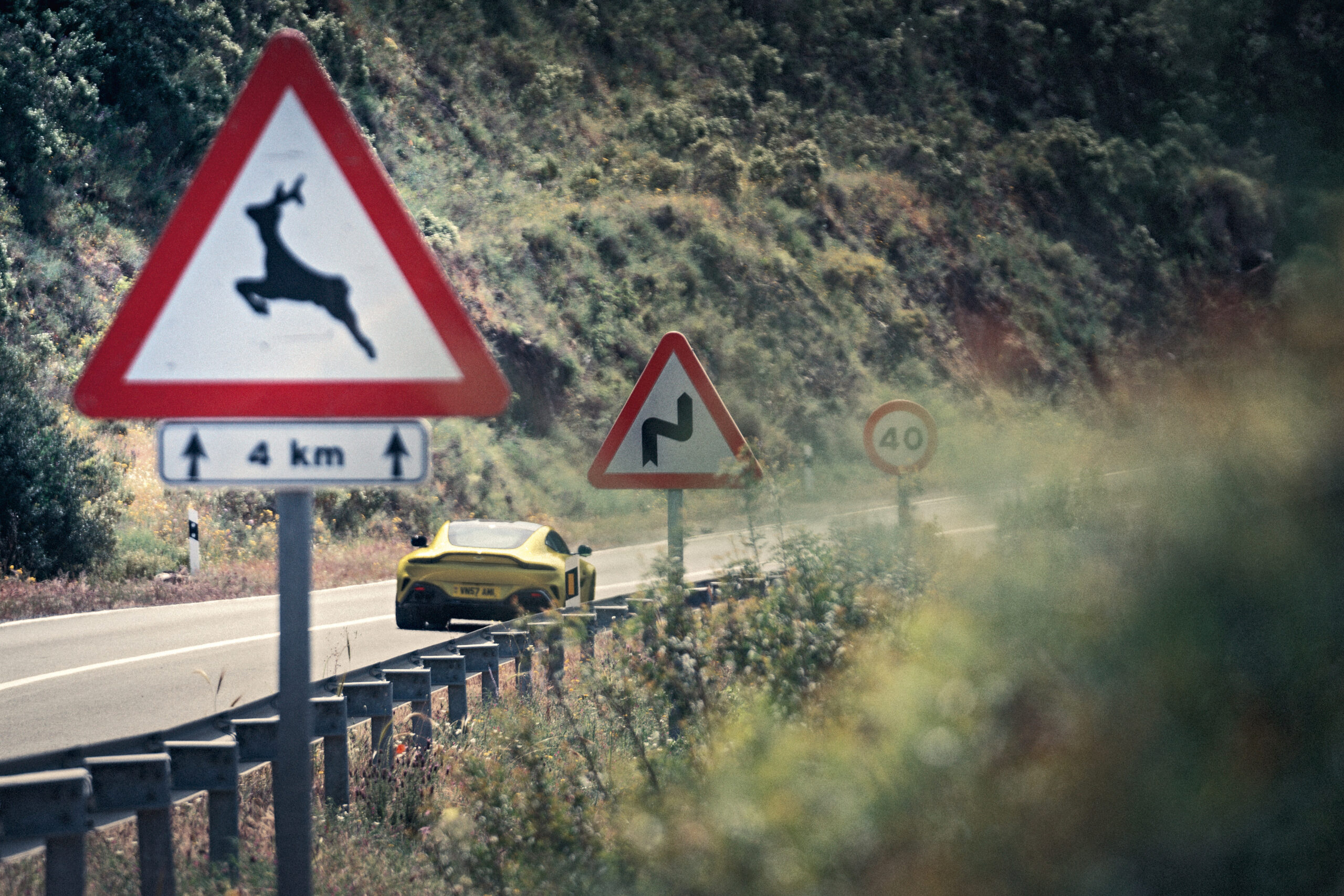
In these electric autonomous mobility transition times, a super sports car like this with a roaring V8 is the antithesis of the zeitgeist. The antagonist in a hero’s saga, whose powerful combustion engine produces a sound that is reminiscent of a disturbing combination of sex, guilt and death. In other words, magnificent! All this makes driving an Aston Martin Vantage a cultural and historical event. An automotive classic even before it rolled off the production line.
And not to worry: it will only get better looking back.
Text & Photos: Matthias Mederer · ramp.pictures
ramp #65 – Surfing Cowboys
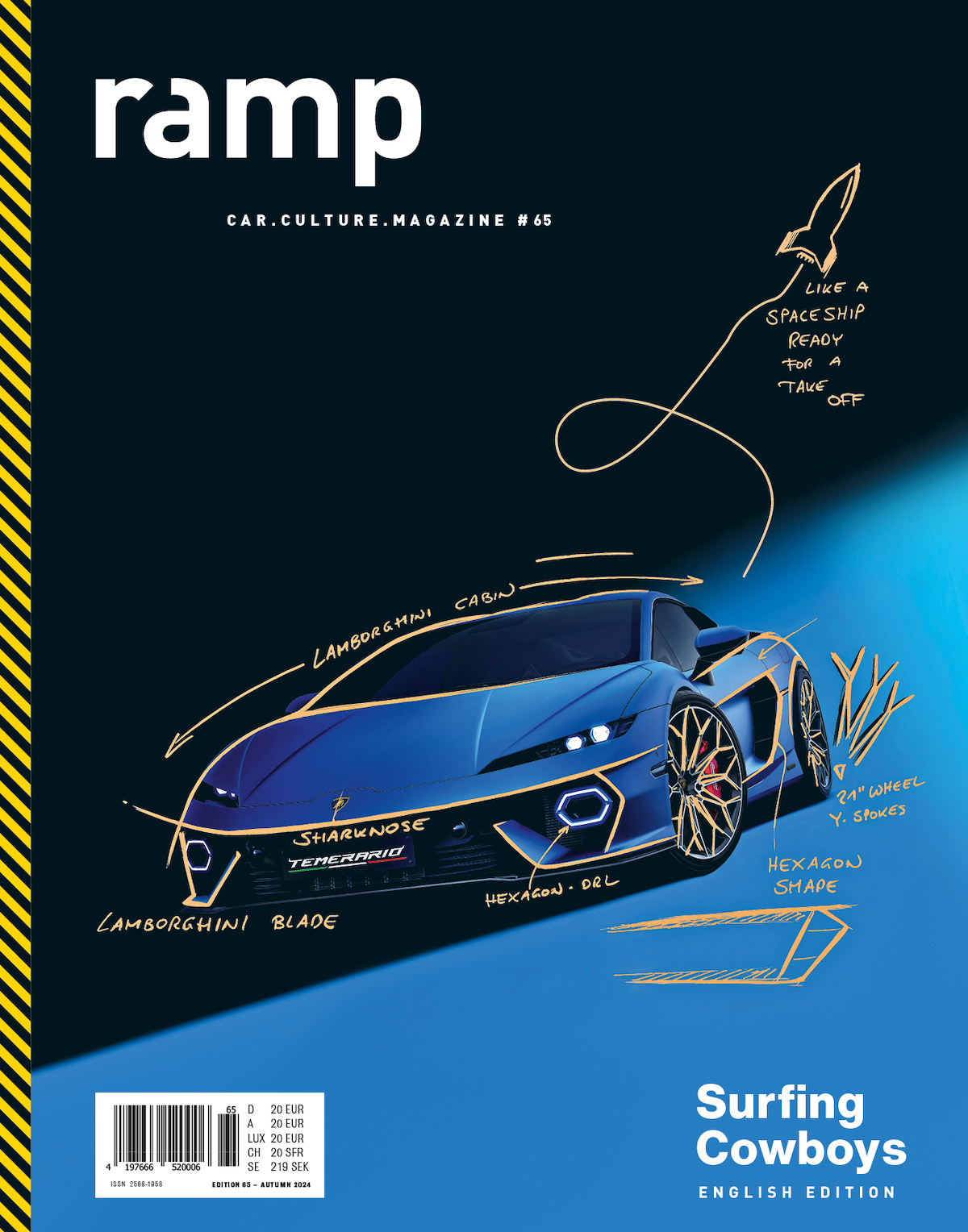
If you think “Surfing Cowboys” refers to neoprene-clad prairie riders or surfers wearing cowboy hats, you’re slightly off the mark in this case. In the latest issue of our Car.Culture.Magazine, it’s about the meeting of two quintessentially American archetypes, both embodying a deep longing for lived independence and untamed, self-determined freedom. Find out more



